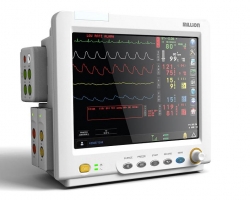Wechat QR code

TEL:400-654-1200

TEL:400-654-1200

Single defibrillation operation and maintenance
1. Starting up (during the starting up process, the machine will self-check, and the 20J light flashes through the standby state)
2. Apply 3-5mm conductive gel on the electrode plates of the two handle electrodes to make them as even as possible
3, choose the appropriate energy level, the corresponding indicator light will be on
4. Press the charging button below to charge the handle electrode. When the charging is completed, the sound will be prompted and the ok light below the machine will be on (the energy above the handle electrode can be stored for 15s, and if it is not discharged within 15s, it will be automatically discharged inside the machine).Meilun
5. The APEX handlebar electrode is placed at the APEX of the heart (the fifth costal margin of the left axillary line) and the other handlebar electrode is placed at the bottom of the heart (the second costal space of the right sternum)

6. Press the white release key on the two handle electrodes at the same time for discharge defibrillation
Defi-b defibrillator maintenance and precautions
Battery charging: each charge 4 hours can be, charging time should not be too long.Meilun
Cleaning: clean the conductive gel on the handle at the end of each use
Precautions for defibrillation:
1. During defibrillation, no one shall touch the patient to avoid electric shock.
2. There is no other conductive material between the two defibrillation electrodes.
3. When defibrillation is performed outdoors, the patient should be completely isolated from the wet floor.
Note: in the first step, switch the three lights on the right side: the top light is the indicator for battery charging; The next two lights are battery level indicators (the green light indicates that there is power, and the red light indicates that the battery is nearly dead). The two lights in the sixth step: the green light above indicates that the handle electrode has been charged and can be discharged to defibrillation; The red light below is a fault light